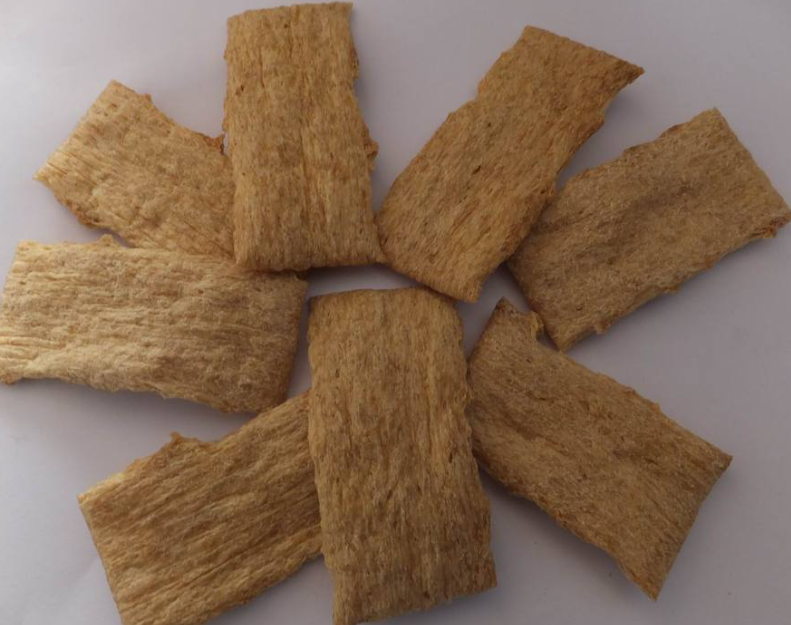Oltre il fagiolo: La scienza high-tech dietro la produzione di carne a base vegetale
The sight of a “burger” that sizzles, “bleeds,” and chews like real beef, but is made entirely from plants, feels nothing short of magic. However, this transformation isn’t sorcery—it’s a feat of food science and precision engineering. The production of modern plant-based meat is a sophisticated process designed to replicate the taste, texture, and experience of animal meat. Let’s pull back the curtain on how it’s made.
Step 1: The Blueprint – Protein Selection and Formula Creation
It all starts with a recipe, but this one is more like a complex architectural blueprint. Food scientists aim to replicate the nutritional profile and sensory experience of meat. The core components are:
- Protein Base: The primary building block. Common sources include:
- Soy Protein: Isolate or concentrate, prized for its high protein content and functional properties.
- Pea Protein: Isolate, a rising star due to its allergen-friendly and non-GMO profile.
- Wheat Gluten: (Seitan) Provides a chewy, fibrous texture that is excellent for mimicking chicken or beef.
- Other Sources: Fava bean, mung bean, and rice protein are also used in blends.
- Grassi: To replicate the juiciness and mouthfeel of animal fat, coconut oil, sunflower oil, and cocoa butter are commonly used. These are often encapsulated to release during “cooking.”
- Flavors & Color: A critical step for achieving meat-like taste. Yeast extracts, fermented compounds, and amino acids create “umami” and savory notes. Beetroot juice, pomegranate powder, and leghemoglobin (a heme-protein from soy) are used to create the red “bloody” look and metallic taste of meat.
- Raccoglitori: Methylcellulose, a plant-derived compound, is often used to help the product hold its shape and bind moisture, especially when cooked.
Step 2: Mixing and Hydration
The dry protein powders are precisely weighed and fed into a high-speed mixer. Here, they are blended with water, oils, and other liquid ingredients. This is not a simple stir; it’s a specific hydration process that allows the protein molecules to unfold and begin to align, which is the first step in forming a meat-like texture.
Step 3: The Magic of Texturization: Extrusion
This is the most crucial step in creating the fibrous, tearable texture of muscle meat. The most common method is High-Moisture Extrusion Cooking (HMEC).
- Condizionamento: The hydrated protein slurry is fed into an extruder—a machine with a long barrel containing one or two rotating screws.
- Cooking and Shearing: As the mixture is pushed forward by the screws, it is subjected to intense heat, pressure, and most importantly, mechanical shear. The screws knead and stretch the protein mixture, much like kneading dough.
- Alignment: Under this combination of heat and shear force, the long chains of plant protein denature and realign themselves into layered, fibrous bundles.
- The Die: The mixture is forced through a special die at the end of the barrel. The shape and design of this die finalize the texture. As the material exits, the sudden drop in pressure causes it to expand into a continuous, dense, fibrous mass—much like pulling a party popper.
The result is not a dry pellet (like pet food or some TVP), but a moist, warm, and ready-to-season product with a texture astonishingly similar to whole-muscle meat like chicken breast or steak. For ground meat applications, this extruded mass is simply ground down.
Alternative Method: Shear Cell Technology
A newer, more energy-efficient method is Shear Cell Technology. It uses a large, rotating cone to create a shear field that stretches and aligns the proteins into fibers. Proponents say it can create even larger, more realistic meat-like textures.
Step 4: Flavoring, Coloring, and Forming
The textured protein base is now cooled. For products like burgers or sausages, it is ground and mixed with seasonings, fats, colors (like beet juice for “blood”), and binding agents. This mixture is then formed into its final shape—patties, sausage links, nuggets, etc.
Step 5: Packaging and Pasteurization
The finished products are rapidly packaged in a modified atmosphere (often replacing oxygen with nitrogen) to drastically extend shelf life and prevent oxidation. Many products undergo high-pressure processing (HPP) or quick pasteurization to ensure they are safe to eat and stable.
Conclusion: More Than Just a Trend
The production of plant-based meat is a far cry from the simple veggie burgers of the past. It’s a deliberate, scientific process that deconstructs and then reconstructs the sensory experience of meat from the molecular level up. This technological innovation is driven by a demand for sustainable, ethical, and healthy alternatives without sacrificing the culinary experience people love. The next time you see a plant-based steak, you’ll see not just food, but the fascinating result of biology, chemistry, and engineering working in perfect harmony.








